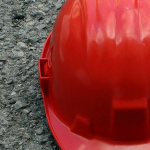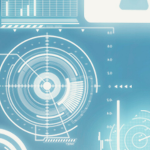On February 21, 2024, UnitedHealth Group (UHG) disclosed that one of its subsidiaries was the victim of a ransomware attack. According to UHG, the cyberattack was perpetrated against Change Healthcare, an operating unit within UHG’s Optum subsidiary. Change Healthcare is a health care technology company that provides support and technical services to UHG and numerous other health care insurers. In response to the cyberattack, UHG proactively isolated the affected systems while it works to assess the damage.
Change Healthcare offers a range of services to the healthcare industry, including payment and billing, prescription processing, and data analytics. According to its website, it processes more than 15 billing healthcare transactions annually. According to the American Hospital Association, Change Healthcare touches 1 out of every 3 patient records.
As of today, Change Healthcare’s systems remain down, and there is no definitive timetable for when the company anticipates restoring services.
HHS Statement on Impact to Federal Health Care Programs
On March 5, 2024, the U.S. Department of Health and Human Services issued a statement detailing the steps HHS would be taking to avoid further disruptions to the health care system. Specifically, HHS/CMS indicated that it would:
- Work to expedite new electronic data interchange (EDI) enrollments for any provider that needs to change the clearinghouse through which it submits Medicare claims. HHS is also encouraging other federal health care programs, including State Medicaid and CHIP agencies, to waive or expedite new EDI enrollments.
- Issue guidance to Medicare Advantage organizations and Medicare Part D sponsors to encourage them to relax or remove prior authorization, utilization management, and timely filing requirements for the duration of the Change Healthcare system outage.
- Encourage MA plans to offer advance funding to providers most affected by the cyberattack.
- Encourage State Medicaid and CHIP agencies to remove or relax their own prior authorization and utilization management requirements, and to consider offering advance funding to providers to the extent permitted by state law.
- Ensure that Medicare Administrative Contractors are prepared to accept paper claims from providers who need to file them.
HHS also indicated that it would permit hospitals to submit requests for Medicare Accelerated Payments, similar to those issued during the early stages of the COVID-19 pandemic; however other providers/suppliers do not seem to have access to this workaround HHS indicated that its MACs would be issuing specific guidance on how to request accelerated payments later this week.
The Potential Impact on EMS Providers
According to various reports, there are approximately 800 payers whose claims routing processes utilize Change Healthcare’s network. The day-to-day processing of electronic claims for these payers may be impacted in varying degrees. This impact may be felt directly, in the case of claims submitted directly by the provider to the payer, or indirectly, in the case of claims submitted through a clearinghouse.
The AAA encourages members to contact their clearinghouses to see which payers, if any, are being affected by the system interruption. Payers that are not capable of processing electronic claims will likely have opened channels for claims to submitted on paper. The clearinghouses should be able to provide additional information on the steps a provider needs to take to ensure the proper processing of these claims.
Optum has also established temporary alternative funding options. Essentially, these are advances based on historical claims submissions, which will be repaid (likely through claim offsets) once Optum’s systems are fully back online. At this point it is unclear whether ambulance providers will be eligible for this alternative funding. Members are encouraged to check the Optum website for further updates.





























